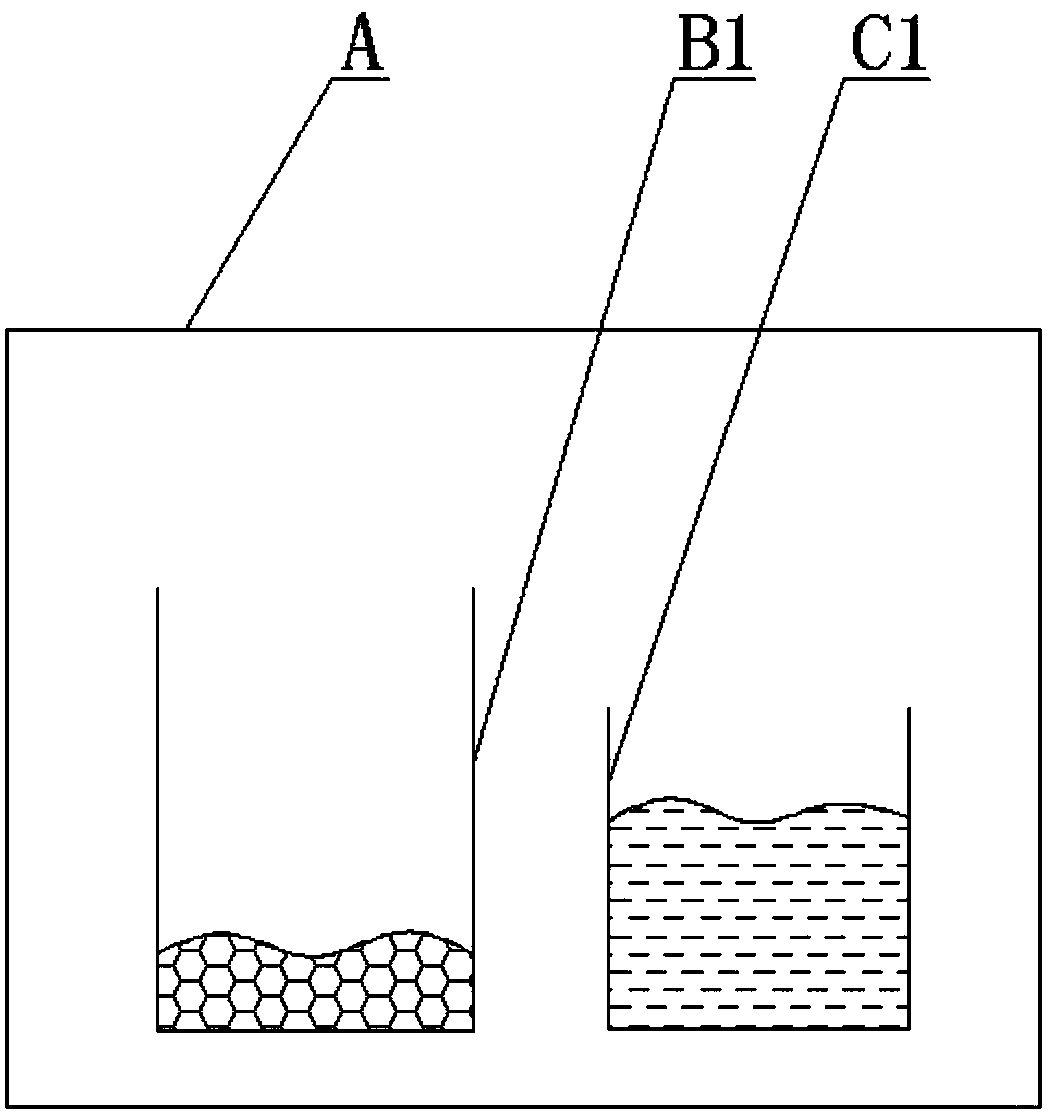Method for removing ginkgolic acid in gingko biloba seeds
A technology of ginkgo seeds and ginkgolic acid is applied in the directions of application, food preparation, food science, etc., can solve the problems such as the inability to use ginkgo seeds, and achieves the effects of convenient operation, improved edibility, and simple steps
- Summary
- Abstract
- Description
- Claims
- Application Information
AI Technical Summary
Problems solved by technology
Method used
Image
Examples
Embodiment 1
[0023] A method for removing ginkgolic acid in ginkgo seeds, the steps are as follows:
[0024] (1) Remove the seed coat of the ginkgo seeds, weigh 50g in a 500ml beaker B1, and add 100ml of distilled water therein;
[0025] (2) Prepare 20wt% NaOH solution in 500ml beaker C1;
[0026] (3) Put B1 and C1 in the pressure cooking kettle A, heat to 120°C, and treat at constant temperature for 40 minutes;
[0027] (4) As a control, another 50g was weighed into a 500ml beaker B1, 100ml of distilled water was added to it, and nothing was added to C1, and the two were placed in an autoclave, heated to 120°C, and treated at a constant temperature for 40min;
[0028] (5) Vacuum-dry the twice-treated ginkgo seeds to constant weight after cooling, measure the ginkgolic acid content therein respectively, measure three times continuously, and calculate the ginkgolic acid content of the ginkgo seeds after heat treatment with alkali simultaneously to be 2.58 ± 0.03ppm, not The content of gin...
Embodiment 2
[0030] A method for removing ginkgolic acid in ginkgo seeds, the steps are as follows:
[0031] (1) remove the seed coat of the ginkgo seeds, weigh 50g in a 500ml beaker B1, add 100ml distilled water thereto, and prepare 10wt% NaOH solution in a 500ml beaker C1;
[0032] (2) Put both B1 and C1 in the pressure-resistant cooking kettle A, heat to 120°C, and treat at a constant temperature for 60 minutes; as a control, weigh 50g into a 500ml beaker B1, add 100ml of distilled water to it, and do not put it into C1 For any substance, place the two in an autoclave, heat to 120°C, and treat at a constant temperature for 60 minutes;
[0033] (3) after cooling, the ginkgo seeds that are processed twice are vacuum-dried to constant weight, measure the ginkgolic acid content wherein respectively, measure continuously three times, can calculate that the ginkgo seed ginkgolic acid content after the simultaneous heat treatment with alkali is 1.90 ± 0.03ppm, The content of ginkgolic acid in...
Embodiment 3
[0035] A method for removing ginkgolic acid in ginkgo seeds, the steps are as follows:
[0036] (1) Remove the seed coat of the ginkgo seeds, weigh 50g in a 500ml beaker B1, add 100ml distilled water to it, and prepare 10wt% KOH solution in a 500ml beaker C1;
[0037] (2) Put both B1 and C1 in the pressure-resistant cooking kettle A, heat to 120°C, and treat at a constant temperature for 60 minutes; as a control, weigh 50g into a 500ml beaker B1, add 100ml of distilled water to it, and do not put it into C1 For any substance, place the two in an autoclave, heat to 120°C, and treat at a constant temperature for 60 minutes;
[0038] (3) after cooling, the ginkgo seeds that are processed twice are vacuum-dried to constant weight, measure the ginkgolic acid content wherein respectively, measure continuously three times, can calculate and the ginkgo seed ginkgolic acid content after the simultaneous heat treatment with alkali is 1.98 ± 0.04ppm, The content of ginkgolic acid in gin...
PUM
 Login to View More
Login to View More Abstract
Description
Claims
Application Information
 Login to View More
Login to View More - R&D
- Intellectual Property
- Life Sciences
- Materials
- Tech Scout
- Unparalleled Data Quality
- Higher Quality Content
- 60% Fewer Hallucinations
Browse by: Latest US Patents, China's latest patents, Technical Efficacy Thesaurus, Application Domain, Technology Topic, Popular Technical Reports.
© 2025 PatSnap. All rights reserved.Legal|Privacy policy|Modern Slavery Act Transparency Statement|Sitemap|About US| Contact US: help@patsnap.com

